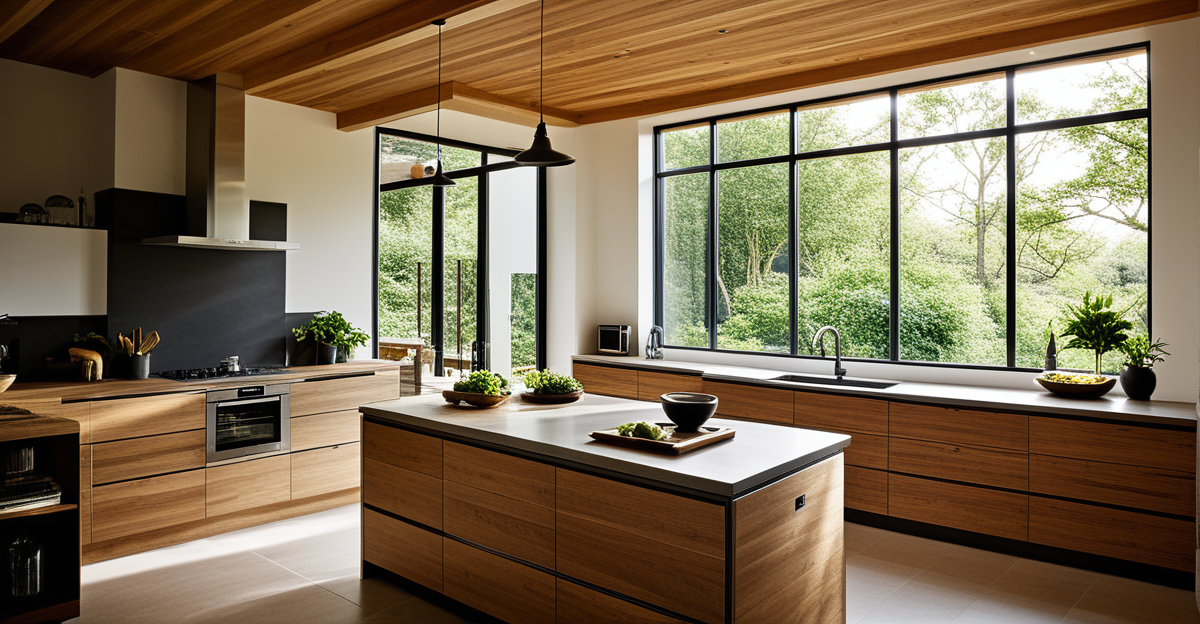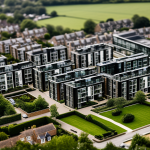Actionable Steps for Creating a Sustainable Home
Creating a sustainable home living environment starts with clear, practical steps that prioritise impactful changes. Begin by conducting an energy and waste audit to identify areas where your eco-friendly household can improve. Simple yet effective upgrades, such as switching to energy-efficient appliances and installing water-saving fixtures, produce immediate results. Practical eco tips also include reducing single-use plastics and implementing a home recycling system tailored to your household’s needs.
Addressing common misconceptions is essential. Many believe that sustainable home living is costly or complicated, but incremental changes, like using LED lighting or composting kitchen scraps, are affordable and manageable. Prioritise actions that create a tangible positive effect, such as improving insulation or choosing sustainable materials for décor.
Have you seen this : What Products Can Enhance Your UK Home Living Experience?
Challenges will arise, including adjusting daily habits or initial setup efforts. Overcoming these hurdles requires staying informed and adopting one change at a time. This step-by-step guide ensures that eco-friendly household transformation is achievable, fostering a lasting commitment to sustainability without overwhelming the homeowner.
Maximising Energy Efficiency at Home
Energy efficiency is a cornerstone of sustainable home living. To reduce energy consumption, start with simple upgrades like switching to LED lighting and using energy-efficient appliances, which offer immediate savings. These changes are straightforward and promote sustainable energy use without major expenses.
Also to discover : How Can Technology Transform Our Living Spaces at Home?
Enhancing insulation in walls and attics also lowers heating and cooling needs, directly cutting energy waste. Renewable energy solutions, such as installing solar panels, further boost efficiency by providing clean, sustainable energy onsite. While the initial investment may seem high, incentives and long-term savings make this a viable option.
Low-cost and DIY strategies bolster your eco-friendly household efforts. For example, sealing gaps around windows and doors prevents heat loss and reduces reliance on HVAC systems. Using smart thermostats or timers can optimise energy consumption by tailoring heating and cooling schedules.
Addressing challenges like upfront costs and understanding new technology can be eased by gradual implementation. Prioritising impactful changes—like lighting and insulation—maximises benefits early, motivating continued progress in energy efficiency within your home.
Water Conservation Techniques for Every Household
Water conservation is vital for a sustainable home living approach. To effectively reduce water waste, start by adopting everyday habits such as turning off taps when not in use and fixing leaks promptly. These small adjustments significantly lower your household’s water footprint without extra cost.
Implementing water-saving devices is another practical eco tip. Installing low-flow showerheads, faucet aerators, and dual-flush toilets can cut water usage by up to 50%. These fixtures are easy to fit and provide immediate reductions in water consumption.
For outdoor water management, consider sustainable landscaping techniques. Using native plants and drip irrigation systems reduces the need for frequent watering. Mulching also retains soil moisture, preventing unnecessary water loss. Such measures foster eco-friendly water use and can greatly decrease your garden’s water demands.
Facing challenges like habits and installation costs can be managed step-by-step. Prioritise actions that yield quick results, such as fixing leaks or switching to efficient fixtures. Combining mindful daily routines with strategic device upgrades maximises your success in water conservation within your eco-friendly household.
Waste Reduction, Recycling, and Responsible Disposal
Effective waste reduction is crucial for creating an eco-friendly household. Start by minimising single-use plastics and packaging, as these contribute heavily to landfill waste. Opt for reusable containers and bags to decrease daily waste output. Building a robust home recycling system ensures that materials like paper, glass, and metals are properly sorted, increasing recycling success.
Composting organic waste, such as food scraps and garden debris, diverts significant volume from the trash and enriches soil naturally. This step supports a zero waste home by closing the loop on household waste. Responsible disposal of hazardous materials like batteries and electronics protects the environment and complies with local regulations.
Common challenges include confusion over recycling rules and initial setup effort. Address these by educating the household on sorting requirements and using clear bins. Prioritise practical eco tips like reducing waste before considering complex recycling systems to maintain motivation. Gradual implementation helps sustain long-term commitment to waste reduction within a sustainable home living framework.
Eco-Friendly Product Recommendations and Alternatives
Choosing the right eco-friendly products is essential for maintaining a truly sustainable home living environment. Opt for non-toxic cleaning and personal care products that minimize harmful chemicals, protecting both your indoor air quality and the environment. Many green home products now use biodegradable ingredients and recyclable packaging, aligning with practical eco tips that reduce household waste.
Selecting sustainable materials for furniture and décor supports eco-friendly household goals by reducing reliance on resource-intensive manufacturing. Look for items made from reclaimed wood, bamboo, or recycled metals, which offer durability while lowering environmental impact. These sustainable alternatives balance style with responsibility, making it easier to commit to greener living without compromising comfort.
Where to find certified eco-friendly household items can be a challenge, but prioritizing well-known certifications (such as EcoCert or Green Seal) ensures authenticity. Many retailers now feature dedicated green sections, and online platforms provide detailed product information to guide choices. By integrating these products into daily life, you build a home that reflects values of sustainability and health, offering long-term benefits for both residents and the planet.
Actionable Steps for Creating a Sustainable Home
Creating a sustainable home living environment requires a step-by-step guide focused on clear, impactful actions. Begin by prioritising changes that deliver immediate results, such as upgrading to energy-efficient appliances and water-saving fixtures. These practical eco tips help launch your transition without overwhelming effort.
To transform your eco-friendly household, assess which areas generate the most waste or energy loss. Prioritise improvements like insulation upgrades or reducing single-use plastics to maximise effect. Regularly evaluating progress keeps motivation high and ensures continuous improvement.
Common challenges often include perceived complexity and costs. Address these by breaking changes into manageable steps and seeking affordable alternatives. Education and consistent habits are key to overcoming misconceptions that sustainability demands radical lifestyle shifts.
By focusing on attainable, actionable measures and embedding practical eco tips into daily routines, your home can evolve sustainably. This approach nurtures lasting commitment and demonstrates that every small change contributes to a healthier environment.
Actionable Steps for Creating a Sustainable Home
Start your sustainable home living journey with a clear step-by-step guide that focuses on prioritising impactful changes yielding immediate results. Begin by assessing your household’s biggest energy and waste challenges to target efforts where they matter most. For example, upgrading to energy-efficient appliances or water-saving fixtures delivers quick, measurable benefits that motivate ongoing commitment.
Practical eco tips facilitate gradual integration of sustainable habits. Break larger projects, like improving insulation or reducing plastics, into manageable tasks to avoid overwhelm. Consistency in applying these changes fosters an eco-friendly household culture over time.
Common misconceptions involve the belief that sustainability demands complex, costly overhauls. Address these by choosing affordable alternatives and implementing changes one step at a time. Regular evaluations of your progress help refine priorities and keep motivation high.
By combining assessment, prioritisation, and practical eco tips, this approach empowers homeowners to build lasting sustainable home living practices. Overcoming challenges becomes more feasible, proving that meaningful environmental impact grows from accessible, well-planned actions.
Actionable Steps for Creating a Sustainable Home
Transforming your home into a sustainable home living space requires a clear, step-by-step guide focusing on practical eco tips that deliver immediate benefits. Start by identifying the highest-impact changes, such as upgrading to energy-efficient appliances or installing water-saving fixtures. These choices reduce resource consumption quickly, motivating continued progress in your eco-friendly household.
Prioritising improvements like enhancing insulation, reducing single-use plastics, or setting up composting systems helps maximise environmental benefits. Breaking down large tasks into smaller, manageable steps prevents overwhelm and fosters consistency. For example, replace lighting with LEDs first, then gradually seal drafts or switch to sustainable cleaning products.
Common challenges include misconceptions that sustainability is costly or complex. Address these by choosing affordable alternatives and committing to one change at a time. Regular self-assessment helps track progress and adjust priorities, sustaining motivation.
Adopting this practical, goal-oriented method enables your eco-friendly household to thrive through achievable changes, proving that effective sustainable home living grows from well-planned, incremental action.







